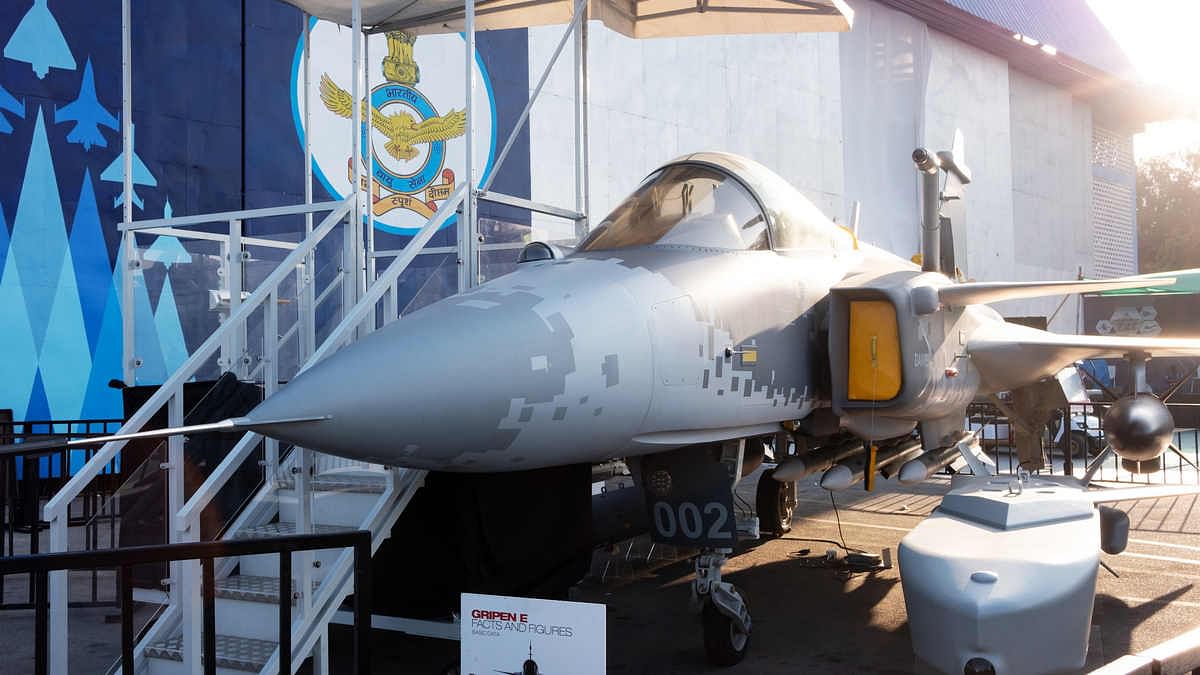In an interview to ThePrint, SAAB India CMD Ola Rignell highlights efficiency of Gripen, its offer to India, & the issues around its sales to Pakistan.

theprint.in
New Delhi: As India looks to acquire 114 new medium multi-role combat aircraft (MMRCA) to shore up its depleting strength, Swedish defence major SAAB has pitched for a complete Transfer of Technology (TOT) and local production of its Gripen fighter jet at “half” the cost of French alternative Rafale.
SAAB India’s chairman and managing director (CMD) Ola Rignell made the cost claims in an interview to ThePrint, but added that he wouldn’t be surprised if India went in for additional 36 Rafale fighters in the coming years, circumventing the ongoing process to acquire new jets in larger numbers.
“India bought 36 Rafale fighter jets from France off the shelf. SAAB and Brazil also signed a contract in 2015 for the sale and local manufacturing of 36 Gripen. The cost was half of what the value of the Indian deal was,” said Rignell, referring to Brazil’s $4.68 billion deal with SAAB to manufacture the Gripen locally.
“We are setting up an entire aviation ecosystem in Brazil. And the experience and knowledge that Brazil is gaining from this manufacturing is being used by them to design their indigenous fighter aircraft,” the SAAB India CMD said.
In 2012, EADS’s Eurofighter and Dassault Aviation’s Rafale had emerged as the winner of the 2007 MMRCA bid, with the latter being the lowest bidder. But the contract negotiations got stuck over prices. Three years later, the Modi government cancelled the protracted talks and decided to buy 36 Rafale fighters in fly-away condition in a €7.87 billion deal.
Now, France is offering another 36 Rafale fighter jets in a government-to-government deal. But these numbers will not suffice in view of the Indian Air Force (IAF)’s MMRCA requirements.
During the interview last week, Rignell spoke about what the company is offering to India, his expectations, and the issue surrounding its sales to Pakistan.
‘Gripen cheaper than Rafale’
Speaking to ThePrint, Ola Rignell highlighted the efficiency of SAAB’s single-engine multirole fighter aircraft vis-à-vis the Rafale, which is being called a game changer for the IAF in the region due to its weapons package.
Gripen has the same weapons package as Rafale including the Meteor air-to-air missile, said Rignell.
“All NATO (North Atlantic Treaty Organisation) missiles are integrated with the Gripen. The only one which is missing is SCALP because it is a French missile. But if India wants, we can integrate the SCALP also though Gripen already has a substitute,” said Rignell.
He pointed out that European missile manufacturer MBDA, which makes both Meteor and SCALP, actually found Gripen as the most mature jet to test their missiles on.
“MBDA ‘test beded’ the Meteor on a Gripen. They found the Gripen to be the most mature. Eighty per cent of Meteor firing tests took place from a Gripen,” he said.
Rignell added that Gripen will always be cheaper in comparison to Rafale in life cycle costs as well because of its single-engine build.
‘Would not be surprised’
SAAB’s India chief said the defence major is offering the best deal to the country, but he won’t be surprised if India opted to buy another 36 Rafale jet from France.
“I would not be surprised,” said Ola Rignell. But he noted that the additional 36 jets will not fulfill the IAF’s requirement.
“The original 36 Rafale was bought when the IAF needed 126 MMRCA. Now there is an RFI (Request for Information) for 114 aircraft. Additional 36 Rafale would still not fulfill what the IAF actually not just wants but needs,” he said.
India and France have already spoken about the latter’s proposal for 36 additional Rafale jets, but New Delhi hasn’t disclosed any information about such a move.
No fresh deal with Pakistan
While Saab is offering the Gripen fighters to India, it is also providing the early warning aircraft system to Pakistan — an issue that has upset the IAF.
Pakistan used the SAAB-manufactured early warning aircraft system to coordinate its attack on an Indian military installation in Jammu and Kashmir a day after the
Balakot strike earlier in February.
During his visit to Sweden in June this year, Air Chief Marshal B.S. Dhanoa had expressed his displeasure with the defence major for supplying Pakistan with early warning systems and also offering Gripen fighters to India.
New Delhi is of the view that it will be difficult to do business with a country that also arms the enemy.
In a bid to pacify the IAF, Ola Rignell persisted that SAAB is not selling any new products to Pakistan.
He also pointed out that every contender has dealt with Pakistan, and other assets were also used in the post-Balakot action.
Pakistan had used French fighters Mirage as well American F-16s.
However, Rignell remained non-committal on future sales to Pakistan, saying the Swedish government decides on such matters and not the company.
“As far as I know, we are not selling any new products to that country (Pakistan). There is an old order and we are fulfilling our contract obligation,” Rignell said.
The Pakistan Air Force had ordered three new SAAB 2000 early warning aircraft in 2017 to supplement the ones that were destroyed in a
terror attack on Minhas air base five years before that.
Rignell added that he was part of the meeting in Sweden when Dhanoa raised the issue and this is exactly what he had told him as well.
“We are trying to sell the latest AWACS (Airborne Warning and Control System) — Golden Eye — to India. We have sold them to UAE. (But) India is already working on its indigenous systems,” he said.
India operates the IL76 ‘Phalcon’ AWACS as well as the Embraer ‘Netra’ early warning aircraft.












